#Kiosk of Trajan
Explore tagged Tumblr posts
Photo

The Kiosk of Trajan at Philae Temple, on Agilkia Island, Egypt
3 notes
·
View notes
Text
The Kiosk of Trajan at Philae Temple, on Agilkia Island, Egypt

0 notes
Text
The Kiosk of Trajan at Philae Temple, on Agilkia Island, Egypt
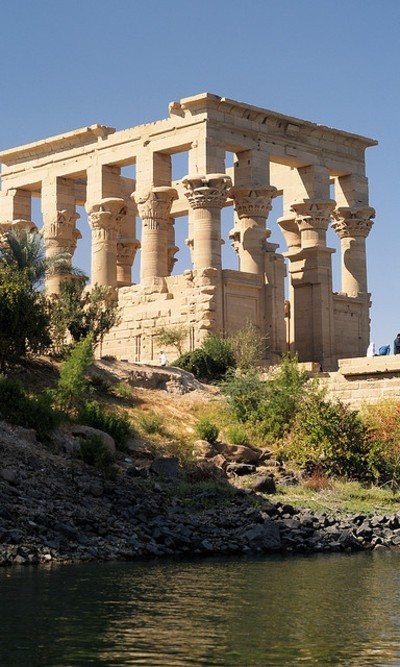
0 notes
Text
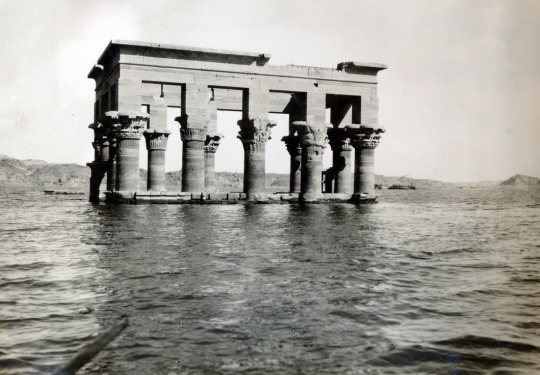
Trajan's Kiosk, Philae, 1928. From the Budapest Municipal Photography Company archive.
209 notes
·
View notes
Text
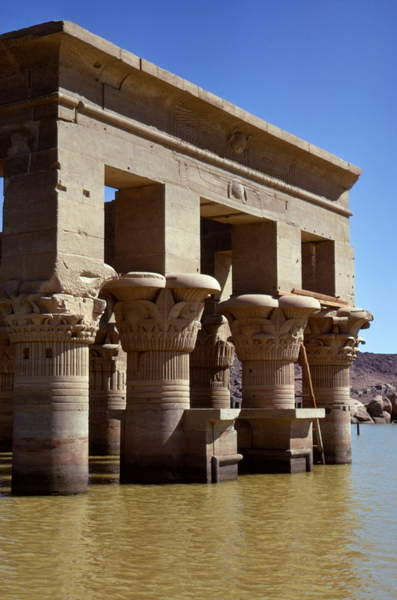
Flooded Kiosk of Trajan before relocation, Philae, 1960
118 notes
·
View notes
Text
The Philae Temple in Egypt
Are you ready for an extraordinary adventure to one of Egypt's most enchanting treasures? Get ready to be captivated by the breathtaking Philae Temple! Nestled on the island of Agilkia in the Nile River, this ancient temple is a sight to behold. Stepping foot into the Philae Temple is like stepping back in time, immersing yourself in the rich history and culture of Egypt. With its magnificent architecture, intricate carvings, and serene surroundings, it is no wonder that the Philae Temple is considered one of the must-see attractions in Egypt.

Before you embark on your journey to the Philae Temple, there are a few things you should know. First and foremost, make sure to plan your visit during the cooler months, as the temperatures can be quite high during the summer. This will ensure a more pleasant and comfortable experience exploring this archaeological gem. Additionally, it is advisable to hire a local guide who can provide you with insightful information about the temple's history and significance. They can also help navigate through the complex layout of the temple, ensuring that you don't miss any hidden gems along the way.

Once you arrive at the Philae Temple, prepare to be amazed by its grandeur. Take your time to explore the various structures within the temple complex, such as the main temple dedicated to the goddess Isis, the birth house, and the Kiosk of Trajan. Marvel at the intricate hieroglyphics adorning the walls, depicting stories of ancient Egyptian mythology and rituals. Don't forget to visit the sacred well where it is believed that Isis' tears created life on Earth.

Take a moment to soak in the peaceful ambiance of the island surrounded by sparkling blue waters. The Philae Temple offers an ideal setting for relaxation and reflection. Sit on one of the stone benches and imagine what life was like during ancient times. As you explore this magnificent temple, let your imagination run wild and transport yourself back to a bygone era.

Reach out to us:
Emails
WhatsApp: (+20) 1553119249
3 notes
·
View notes
Text
Explore Philae Temple in Aswan
Philae Temple, located in Aswan, Egypt, is a stunning ancient complex that was originally built to honor the goddess Isis. It holds immense historical and cultural significance and is a must-visit for those interested in ancient Egyptian history, architecture, and mythology. Here’s an exploration of its key features:
History and Relocation
Original Location: The temple was initially constructed on Philae Island during the Ptolemaic Dynasty (4th–1st century BCE). It features Roman additions made later.
UNESCO Project: Due to the construction of the Aswan High Dam in the 1960s, Philae Island was submerged underwater. To save the temple, UNESCO led a project to relocate it to nearby Agilkia Island, which was completed in the 1970s.
Key Features of the Temple
Temple of Isis: The main temple is dedicated to Isis, the goddess of magic, motherhood, and fertility. The intricate carvings depict scenes from Egyptian mythology, including the resurrection of Osiris and the birth of Horus.
Kiosk of Trajan: A small but beautifully preserved Roman structure with columns and reliefs, often used for ceremonial purposes.
The First Pylon: The grand entrance features colossal reliefs of Ptolemaic pharaohs smiting enemies in front of the gods.
Inner Sanctuaries: Within the temple are several rooms, culminating in the sanctuary where sacred rituals were performed.
Sacred Lake: A tranquil body of water that was integral to religious ceremonies.
Mythological Significance
Philae Temple is closely tied to the myth of Osiris. It is said to be one of the burial sites of the god, making it a pilgrimage destination in ancient times.
Visiting Philae Temple
Access: The temple can only be reached by boat, adding to its mystique.
Sound and Light Show: A nightly performance brings the history and legends of Philae to life with dramatic lighting and narration.
Best Time to Visit: Cooler months (October to April) are ideal, with early mornings or late afternoons offering the best lighting for photography.
0 notes
Text
Temple of Philae
Dedicated to Isis, goddess of love, the Philae Temple is one of the most beautiful and best preserved in the country. It is located on a small island that can only be reached by boat, a detail that gives this place even more charm, if that is possible.
According to legend...
The Temple of Philae is of great importance to the Egyptians since, according to legend, when King Osiris was murdered by his brother, who scattered parts of his body throughout the country, his wife Isis took them and took refuge on the island of Philae to rebuild it.
A tour of the temple...
On the island you can see several buildings, among which the imposing Temple dedicated to Isis stands out. We can also find other buildings of great value, such as the Temple of Hathor, Trajan's Kiosk, or the pylons (a characteristic element of Ancient Egyptian architecture) that are found at the entrance to the temple.
Even if we don't notice, the current location of the Philae Temple is not the same as it was in the past, since after the construction of the Aswan Dam, the building was submerged by water. Fortunately, it was carefully transferred to the location where it is today, very close to the previous one. It has the last known Egyptian writings ever made or carved in stone.
Essential
The Temple of Philae is a practically obligatory visit for anyone taking a cruise along the Nile. In addition to being perfectly preserved, it is a real pleasure to reach the temple by boat, enjoying the views as we approach it.⚱️
instagram
0 notes
Text
Blue Shadow Nile Cruise
Blue Shadow Nile Cruise
Explore the well-known cities of Aswan, Kom Ombo, Edfu, and Luxor for fun and to have a posh experience. Choose from a variety of Nile Cruises, such as Blue Shadow Nile Cruise, that provide you with an excellent experience and transport you to both well-known and lesser-known sights along the banks of the river Nile.
Experience the charming nature of Aswan and see the breathtaking sights in the city with Blue Shadow Nile Cruise Tours and Stay. You will have the opportunity to see the magnificent High Dam, one of the most significant advancements and accomplishments in modern Egyptian history, and then feast your eyes on the magnificence of Philae Temple, which houses numerous ancient Egyptian sanctuaries and shrines, including For Millennia, the Bed of the Pharaoh, Trajan's Kiosk, and more. As the epicentre of the religion of the goddess Isis under the Ptolemaic Dynasty, Philae gained popularity.
The magnificent Kom Ombo and Edfu Temples are open for exploration on the Blue Shadow Nile Cruise. Visit the Kom Ombo Temples, which are made up of the Sobek Temple and the Haroeris Temple. The Greco-Roman era saw the construction of the Kom Ombo Temple. The temple, known as "Ber Sobek" or the abode of the god Sobek, was much older and its ruins served as the foundation for this one. Additionally, sail to Edfu Temple, which is ranked second in size only to Karnak. It started to be built in the Ptolemy III era and was finished in the Ptolemy IV era. It was intended for Horus, the god with a falcon head. As a result, it served as the focal point of numerous Horus-related sacred Egyptian ceremonies.
Blue Shadow Nile cruise boat Starting from Luxor
Every Saturday for 4 Nights 5 Days Program ends at Aswan in Wednesday
Day 1 Welcome in Luxor - Luxor Tours from Nile Cruise
Welcome in Al Uqsur governorate (Luxor ), Egypt (Around the clock) Worldtouradvice tour manager will meet & assist you at any destination in Luxor such as Luxor airport, Rail station or hotel. and then,you will be escorted to your blue shadow Nile cruise boat to check in for 5 days/4 nights holiday
Today relish a tour to the enormous Temple of Karnak. one of Egypt’s superb ancient temple , Strolling through the massive Court into the Great Hypostyle Hall in Karnak temple, it’s impossible not to be overwhelmed by the 134 columns towering above you like an antique forest. At the backward of the complex you will see the holy lake where centuries ago it was used for purification. After touring Karnak temples complex, you will have more free time to reconnoiter at leisure.Stir to Luxor Temple which revealed by Mariette in the 1860 and was once connected to the Temples of Karnak by a two-kilometer long Avenue of Sphinx. A pure Egyptian temple, the internal walls and columns are adorned with knotted hieroglyphics which your masterly guide will assist you decipher. Find out how Alexander the Great recorded himself into Luxor Temple’s history, and set your eyes on one of the original pair of obelisk, the second of which now stands on the Concorde square in Paris
Overnight in Luxor - Lunch- Dinner meals
Opt tours Sound and light show or tour to banana island
Day 2 Luxor West Bank Tours From Nile cruise
You can opt to float over luxor temples in a hot air balloon to relish views of Egypt most scenic landscapes, It is an adventure framed by pure blue skies over Luxor, Then starting your circuit in Luxor West Bank; where 64 ancient Egyptian pharaohs lie entombed in the Valley of Kings and the most famous tomb was the only intact tomb found in the valley and belonging to king Tut Ankh Amen, It was revealed by the Archaeologist Howard Carter in 1922.
If you want to enter inside King Tutankhamen and Ramses VI tombs, a supplementary cost is payable immediate during the tour. West bank’s touring also encompassing the staggering Funerary Temple of Queen Hatshepsut, Egypt’s only female ruler, rising out of the desert plain in a series of terraces. Relish free period to reconnoitre at your leisure as you stroll the massive courtyards and marvel the complicated hieroglyphic frills. you’ll also enamour the Colossi of Memnon Standing like guards along the way to the Valley of Kings, impressive memorials of Amenhotep that soar 75 feet above the desert yellow sands.You will cruise to Edfu via Esna dam. Relish your afternoon tea and snacks out on the sun deck, bask in the sun, Tonight, enjoy a specific Egyptian Galabeyya Party. Overnight in Edfu
Overnight in Edfu - Breakfast-lunch-dinner
Day 3 Edfu and Kom Ombo tours from Nile cruise
Today your masterly tour guide , Expert in Egyptology will guide you to reconnoiter the gorgeous Temple of Horus at Edfu, the falcon-headed god, Edfu temple is the most completely preserved Pharaonic temple (albeit Greek-built). According to the Ancient Egyptian legends , Edfu temple was the site where the falcon-headed god Horus revenged the homicide of his father Osiris by killing Set.Relish an absorbing lunch while sailing to Kom ombo which is devoted to the crocodile god Sobek and you can still see the mummies of an ancient mummified crocodile, which was venerated here thousands of years ago. Kom Ombo temple was erected on the honor of two gods the crocodile-headed Sobek, god of fertility and innovator of the world, and Haroeris or the ancient falcon-headed Horus. Then, quit for the picturesque sailing to Aswan and overnight in Aswan.
Day 4 Aswan sightseeing tours from Nile cruise
Relish a leisurely breakfast, Starting you tour by visiting Aswan high dam, an engineering miracle when it was erected by president Nasser in the 1960s, Aswan Dam ( Al Sad Al aali ) is an embankment dam existing across the river the Nile in Aswan, Egypt. it was erected to dominate the water flowing of the Nile river, it creats a huge lago behind it ( Nasser lake ), The High Dam was constructed since 1960, and only after few years of building it, it has had a worthy effect on the economy and culture of Egypt, Relish the splendid landscape along the river, peek have a glimpse of the world-famed Aswan high Dam, 10 minutes free time for walking on the bank, take the best photos of Aswan dam, the guide will tell you more about the background of the history of the river Nile and Aswan dam.
Stir to the awe-inspiring antique granite quarries and site of the Unfinished Obelisk. Illustrating the talent of Egypt’s stonemasons, this monolith is one-third towering than any other ancient Egyptian obelisk. Now ride a motorized vessel to Philae Temple on the island of Agilika. This heavenly complex was consecrated to the Goddess Isis and reflects a melting of three great civilizations — Egyptian, Greek and Roman.
Thereafter, Relish the peace and quietness of the felucca Nile sailing ride in Aswan. Enjoy the sunset and high tea and snacks in the same place where Agatha Christie wrote her famed mystery fiction, Death on the Nile, and taste the flavour of the Imperial age when famous guests such as Charlie Chaplin and Winston Churchill stayed in Nile cruises tours.
Overnight in Aswan
Breakfast, Lunch, dinner
Optional tour to witness Sound and light show in Philae or Abu Simbel tour from Aswan
Day 5 Check out, End of Nile cruise Blue Shadow holiday
You can opt to travel either by flight or Ac coach to witness the majesty of Abu Simbel temples, Early check out followed by breakfast, transfer to Aswan airport or train station
itinerary 2
Day 1 Aswan sightseeing tours from Nile cruise
Wednesday Embarkation to Blue Shadow Nile cruise, Relish a luscious Lunch, starting your tours to scout the legendary High Dam, Feast your eyes by gazing at the magnificence of Philae Temple, Sailing on the Nile by Felucca, visit the stunning not complete obelisk in Aswan ancient granite quarries, lately transfer back to your Nile Cruise, Tasteful Lunch meal is waiting for you on board Afternoon tea, Relish Captain's welcome cocktail , Taste the delicious Egyptian Guava juice, Dinner and overnight on board Ms Blue Shadow in Aswan.
Overnight in Aswan
Lunch- dinner
Day 2 Kom Ombo- Edfu toursfrom Nile cruise
Thursday Optional tours to Sound and light show in Philae or to visit Abu Simbel temples
Thursday Relish a luscious breakfast on board Blue Shadow Nile cruise, feast your eyes at the time your Cruise Sailing from Aswan to Kom Ombo, scouting the glamour of Kom Ombo Temple, then sail to Edfu, Once you arrive Edfu visit the enchanting Temple of Horus in Edfu followed by sailing to Esna, Lunch included on board, enjoy Egyptian Galabeya Party, Sailing to Luxor, dinner and overnight on board on board Blue Shadow Nile cruise in Luxor.
Overnight in Edfu
Breakfast-Lunch- dinner
Day 3 Luxor tours from Nile cruise
Relish your luscious breakfast on board, sailing to Luxor, Unleash your inner explorer by the Nile cruise tours between Valley of the Kings (visiting 03 Tombs Only, Tut Ankh Amon with additional ticket), and Queen Hatshepsut temple tour, It is known now with the name of El-Deir El-Bahary, your last visit will be to Colossi of Memnon, Watch the glory of the two huge statues, Then our tour guide will escort you back to Princess Sarah Nile cruise, Lunch included on board, Belly Dance Show, dinner and overnight on board Blue Shadow cruise in Luxor.
Day 4 Disembarkation- Luxor Tours, End of Nile cruise holiday
Relish your luscious breakfast on board followed by Disembarkation from Blue Shadow Nile cruise, Now amuse your eyes by a tour to see the legendary Karnak Temples with its enormous Pillars hall, then stir towards Luxor temple to Explore the relation between the 2 temples.
Blue Shadow Nile cruise Includes
Meet and assis service , pick up service from Luxor or Aswan airport, train station
All transfers by modern AC coach with expert drivers
Accommodation on board Blue Shadow Nile Cruise includes breakfast, lunch, dinner
All the Nile cruise tours as mentioned in worldtouradvice itinerary
Professional English speaking guide ( Expert in Egyptology ) on board Blue Shadow Nile Cruise
Entrance fees to all the mentioned sites in World tour advice itinerary
All Service Charges and taxes
Blue Shadow Nile Cruise Facilities
This deluxe Five-star Nile cruise ( Blue Shadow ) purvey you a voyage to remember with gorgeous dining, stunning surroundings and an catchy program of onboard entertainment as well as granting you relaxing access to the sights and scenery of the Nile and South Egypt. roomette are equipped with air conditioning, mini-bar, satellite flat-screen TV, wide-ranging Panoramic Windows, & Safe box.
Blue Shadow Nile Cruise Excludes
- Optional tours
- Tipping
- Anything not mentioned in our itinerary
For more info
Website
Mobile and what’s App:
002 01090023837
0 notes
Text
The Hypaethral Temple, also known as the Temple of Isis, was indeed located on the Isle of Philae. Philae is an island in the Nile River, near Aswan in southern Egypt. The temple complex was dedicated to the Egyptian goddess Isis and was considered one of the most important sanctuaries of her worship.
The original location of the Hypaethral Temple on the Isle of Philae was actually on a previous temple site. Over the centuries, multiple structures were built and modified on the island, reflecting different architectural styles and religious influences. The earliest known temple on Philae dates back to the 4th century BCE, during the Ptolemaic period, but the island was considered sacred even before that time.
The Hypaethral Temple itself was primarily constructed during the Greco-Roman period, between the 3rd century BCE and the 3rd century CE. The temple was built with an open roof or without a ceiling, hence the name "Hypaethral," which means "open to the sky." This design allowed light to flood the inner sanctuaries and accentuated the connection between the temple and the heavens.
The Temple of Isis on Philae was renowned as one of the last active centers of ancient Egyptian religion. Even after the decline of traditional Egyptian worship, the temple complex continued to be used as a place of pilgrimage and veneration by various cultures, including the Greeks, Romans, and early Christians.
Unfortunately, due to the construction of the Aswan High Dam in the 20th century, the original location of the Hypaethral Temple on the Isle of Philae was threatened by the rising waters of Lake Nasser, the reservoir created by the dam. As a result, an international effort was undertaken to salvage the temples of Philae and relocate them to a nearby island, Agilkia Island, between 1972 and 1980. The temples were dismantled, block by block, and reassembled on the new island to save them from submersion.
Today, the Hypaethral Temple of Philae stands on Agilkia Island, which has been landscaped to resemble the original Philae island. The temples of Philae, including the Temple of Isis, are now a UNESCO World Heritage Site and continue to be visited by tourists from around the world.
-
SAVING THE MONUMENTS OF PHILAE
The first Aswan Dam (El Khazan) was built between 1898-1902. This was when Philae was first threatened. Poets and writers lamented its destiny but their words fell on deaf ears. Between 1907-1912 the dam was heightened, and fears for the remains of all Nubia were voiced. The Egyptian Government set aside funds to survey, record and, whenever possible, excavate the endangered areas. At this time Philae was inundated for part of each year, from December to August. When it did emerge from the waters of the Nile, it appeared sorrowfully shorn of its vegetation. The picturesque ruins rose from black silt-laden soil with not a shrub nor tendril to break their barren appearance.
Between 1929-34 the Aswan Dam was raised another ten metres, to a height of 44.5 metres. Philae was now inundated for most of the year. Only the high pylon of the temple of Isis, and the kiosk of Trajan, situated at its highest point, could be seen. Small boats could, with difficulty, sail beneath the great architraves. The capitals of the Tolty columns alone hinted at what architectural treasures lay beneath the water. Being constructed of sandstone, submersion caused no lasting damage. In fact, the monuments strengthened from contact with water. And the silt which packed against the reliefs, though stripping them of colour, actually protected them.
The decision to build the High Dam (Saad El Aali) in 1960 caused attention to be focused once again on the fate of Philae. For now, with the constant high level of the water, the monuments would be totally inaccessible. Moreover, the swirling currents from the High Dam that was built south of the island and the existing Aswan Dam to the north would cause them irreparable harm, if not bring about their total collapse.
Egypt launched an international appeal through UNESCO. Philae was brought into the limelight. Projects for saving the monuments were many and varied. All were studied. One project was to build a protective dam on the west, cutting off the island from the main flow of the river and, theoretically, letting it rest in a lowerlevel lake of its own. This project was abandoned on the grounds that constant pumping out of water would be required to keep the lake at a constant level. The final decision was to dismantle the monuments and re-erect them on another island: Agilkai, slightly to the north of Philae.
An Italian contracting company was chosen to carry out the work. They started with the construction of a coffer dam in 1977. The water was then pumped out, and when the greyish-green blocks were exposed they were dissected, stone by precious stone (fortyseven thousand in number), cleaned, treated, marked and stored.
During the dismantling operations, many blocks of earlier monuments were found to have been reused, especially in the foundations of the buildings. For example, a kiosk dating from the 26th Dynasty during the reign of the pharaoh Psamtik II (594-588 BC) was found dismantled and reused on the western part of the island. Beneath the flagstones of the hypostyle hall of the temple of Isis, another temple, also dating from the 26th Dynasty, was brought to light. Nektanebos, the first ruler of the last, zoth Dynasty (387-361 BC) had reused granite and sandstone blocks inscribed with the names of Amenhotep II, III and Thutmose III for his own constructions on the island, but these had come from temples elsewhere since Herodotus made no mention of Philae when he visited Aswan in the mid-filth century BC.
While dismantling operations continued, the Egyptian High Dam Company blasted 450,000 cubic metres of granite off the top of Agilkai island. They used some of this to enlarge part of the island to resemble the shape of Philae in order to contain the monuments without distortion. The stones from the dismembered temples were then transported to their new home, and, in a record of thirty months, have been re-erected in an even more perfect condition than before, for many of the reused or fallen blocks that were located were used to reconstruct the original temples.
In March 1980, following an impressive public inaugural ceremony, Philae was declared open to the public. Visitors may once again view the elegant colonnades, the celebrated kiosk and the magnificent Temple of Isis. Soon, when plants take root, the 'Pearl will once again fit the description of Amelia Edwards who wrote in 1873/74: ''Seen from the level of a small boat, the island, with its palms, its colonnades, its pylons, seems to rise out of the river like a mirage. Piled rocks frame it on either side, and purple mountains close up the distance. As the boat glides nearer between glistening boulders, those sculptured tomers rise higher and ever higher against the sky. They show no sign of ruin or of age. All looks solid, stately, perfect.*
link: https://shre.ink/lztT
#edisnmariotti
edison mariotti
@edisonblog
.br
O Templo de Hypaethral, também conhecido como Templo de Ísis, estava de fato localizado na Ilha de Philae. Philae é uma ilha no rio Nilo, perto de Aswan, no sul do Egito. O complexo do templo foi dedicado à deusa egípcia Ísis e foi considerado um dos santuários mais importantes de sua adoração.
A localização original do Templo Hypaethral na Ilha de Philae era, na verdade, um templo anterior. Ao longo dos séculos, várias estruturas foram construídas e modificadas na ilha, refletindo diferentes estilos arquitetônicos e influências religiosas. O templo mais antigo conhecido em Philae remonta ao século IV aC, durante o período ptolomaico, mas a ilha era considerada sagrada mesmo antes dessa época.
O próprio Templo Hypaethral foi construído principalmente durante o período greco-romano, entre o século III aC e o século III dC. O templo foi construído com telhado aberto ou sem teto, daí o nome "Hypaethral", que significa "aberto para o céu". Este projeto permitiu que a luz inundasse os santuários internos e acentuou a conexão entre o templo e os céus.
O Templo de Ísis em Philae era conhecido como um dos últimos centros ativos da antiga religião egípcia. Mesmo após o declínio da adoração tradicional egípcia, o complexo do templo continuou a ser usado como local de peregrinação e veneração por várias culturas, incluindo os gregos, romanos e os primeiros cristãos.
Infelizmente, devido à construção da represa alta de Aswan no século 20, a localização original do Templo Hypaethral na Ilha de Philae foi ameaçada pelas águas crescentes do Lago Nasser, o reservatório criado pela represa. Como resultado, um esforço internacional foi realizado para salvar os templos de Philae e realocá-los para uma ilha próxima, a Ilha Agilkia, entre 1972 e 1980. Os templos foram desmontados, bloco por bloco, e remontados na nova ilha para salvá-los de submersão.
Hoje, o Templo Hypaethral de Philae fica na Ilha Agilkia, que foi ajardinada para se assemelhar à ilha original de Philae. Os templos de Philae, incluindo o Templo de Ísis, são agora um Patrimônio Mundial da UNESCO e continuam a ser visitados por turistas de todo o mundo.
-
Salvando os monumentos de Philae
A primeira barragem de Aswan (El Khazan) foi construída entre 1898-1902. Foi quando Philae foi ameaçado pela primeira vez. Poetas e escritores lamentavam seu destino, mas suas palavras caíram em ouvidos surdos. Entre 1907-1912, a barragem foi aumentada e os medos para os restos de todos os Nubia foram expressos. O governo egípcio reservou fundos para pesquisar, registrar e, sempre que possível, escavar as áreas ameaçadas de extinção. Nessa época, Philae foi inundado por parte de cada ano, de dezembro a agosto. Quando surgiu das águas do Nilo, parecia frágil e desgastado de sua vegetação. As ruínas pitorescas subiram de solo preto carregado de lodo, sem um arbusto nem tendril para quebrar sua aparência árida.
Entre 1929-34, a barragem de Aswan foi levantada por mais dez metros, a uma altura de 44,5 metros. Philae agora foi inundado durante a maior parte do ano. Somente o alto pilão do templo do ISIS e o quiosque de Trajano, situado em seu ponto mais alto, podiam ser vistos. Pequenos barcos poderiam, com dificuldade, navegar sob os grandes arquitraves. Somente as capitais das colunas de Tolty sugeriam quais tesouros arquitetônicos estavam embaixo da água. Sendo construído em arenito, a submersão não causou danos duradouros. De fato, os monumentos fortalecidos do contato com a água. E o lodo que empacotou os relevos, embora os retirasse de cor, realmente os protegeu.
A decisão de construir a barragem alta (Saad El Aali) em 1960 fez a atenção se concentrar mais uma vez no destino de Philae. Por enquanto, com o alto nível constante da água, os monumentos seriam totalmente inacessíveis. Além disso, as correntes rodopiantes da alta barragem que foram construídas ao sul da ilha e a barragem de Aswan existente ao norte lhes causariam danos irreparáveis, se não fizeram seu colapso total.
O Egito lançou um apelo internacional através da UNESCO. Philae foi trazido para o centro das atenções. Os projetos para salvar os monumentos eram muitos e variados. Todos foram estudados. Um projeto era construir uma barragem de proteção a oeste, cortando a ilha do fluxo principal do rio e, teoricamente, deixando -o descansar em um lago de nível inferior próprio. Este projeto foi abandonado com o argumento de que seria necessário bombear constantemente a água para manter o lago em um nível constante. A decisão final foi desmantelar os monumentos e reercá-los em outra ilha: Agilkai, um pouco ao norte de Philae.
Uma empresa de contratação italiana foi escolhida para realizar o trabalho. Eles começaram com a construção de uma barragem de cofre em 1977. A água foi bombeada e, quando os blocos verde-acinzentados foram expostos, foram dissecados, pedra por pedra preciosa (quarenta e sete mil em número), limpa, tratada, marcada e armazenada .
Durante as operações de desmantelamento, muitos blocos de monumentos anteriores foram reutilizados, especialmente nas fundações dos edifícios. Por exemplo, um quiosque datado da 26ª dinastia durante o reinado do faraó Psamtik II (594-588 aC) foi encontrado desmontado e reutilizado na parte ocidental da ilha. Sob as lajes do salão de hipóteses do templo do ISIS, outro templo, também datado da 26ª dinastia, foi trazido à tona. Nektanebos, o primeiro governante da última, a dinastia Zoth (387-361 aC) havia reutilizado os blocos de granito e arenito inscritos com os nomes de Amenhotep II, III e Thutmose III para suas próprias construções na ilha, mas estes vieram de templos em outros lugares Desde que Heródoto não mencionou Philae quando ele visitou Aswan em meados do século-século aC.
Enquanto as operações de desmantelamento continuavam, a empresa egípcia das barragens altas explodiu 450.000 metros cúbicos de granito no topo da ilha Agilkai. Eles usaram um pouco disso para ampliar parte da ilha para se parecer com a forma de Philae, a fim de conter os monumentos sem distorção. As pedras dos templos desmembradas foram transportadas para sua nova casa e, em um recorde de trinta meses, foram reerbitadas em uma condição ainda mais perfeita do que antes, para muitos dos blocos reutilizados ou caídos que foram localizados foram usados para reconstruir os templos originais.
Em março de 1980, após uma impressionante cerimônia inaugural pública, Philae foi declarada aberta ao público. Os visitantes podem mais uma vez ver as elegantes colunatas, o célebre quiosque e o magnífico templo do ISIS. Em breve, quando as plantas se enraizarem, a Pearl se encaixará mais uma vez na descrição de Amelia Edwards, que escreveu em 1873/74: '' Visto a partir do nível de um pequeno barco, a ilha, com suas palmas das mãos, suas colunatas, seus pilotos, parece sair do rio como uma miragem. As rochas empilhadas o enquadram de ambos os lados e as montanhas roxas fecham a distância. À medida que o barco desliza mais perto entre as pedras brilhantes, esses tomers esculpidos aumentam mais e cada vez mais contra o céu. Eles não mostram sinal de ruína ou idade. Tudo parece sólido, imponente, perfeito.*
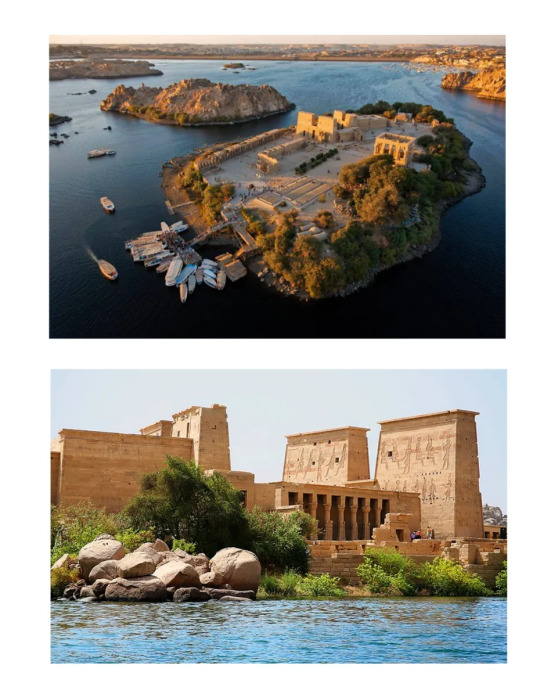
0 notes
Photo

The Kiosk of Trajan at Philae Temple, on Agilkia Island, Egypt
36 notes
·
View notes
Photo
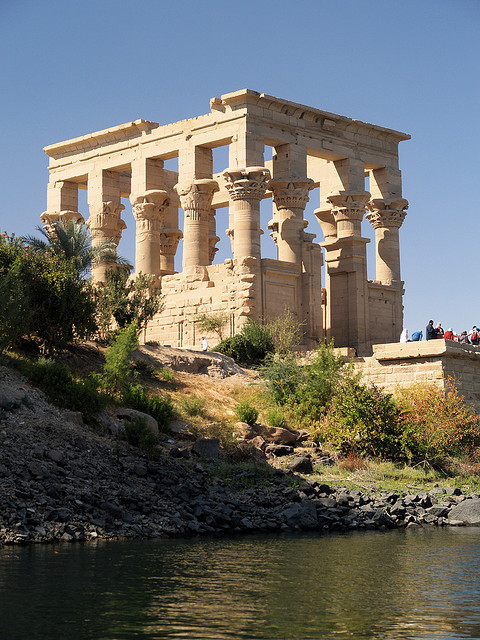
The Kiosk of Trajan at Philae Temple, on Agilkia Island, Egypt
12 notes
·
View notes
Photo
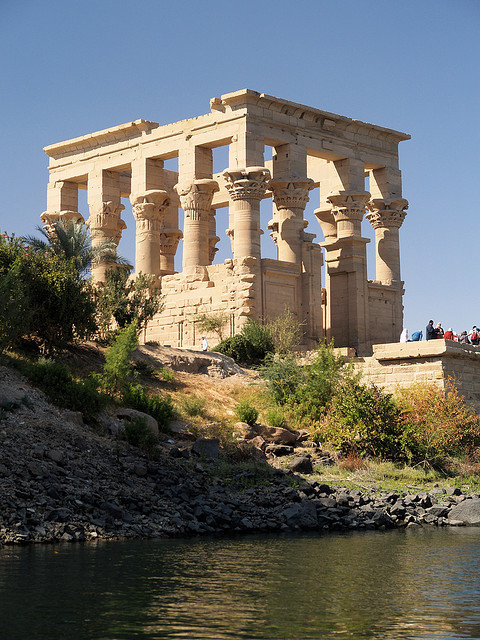
The Kiosk of Trajan at Philae Temple, on Agilkia Island, Egypt
1 note
·
View note
Text

Trajan's kiosk with the Temple of Isis in the background, Philae, 1928. From the Budapest Municipal Photography Company archive.
144 notes
·
View notes
Photo

The Kiosk of Trajan at Philae Temple, on Agilkia Island, Egypt
3 notes
·
View notes
Text
Sya nak buat..&joal.. kiosk klu.anda Mao..claa.& WhatsApp.sya. 01127036038


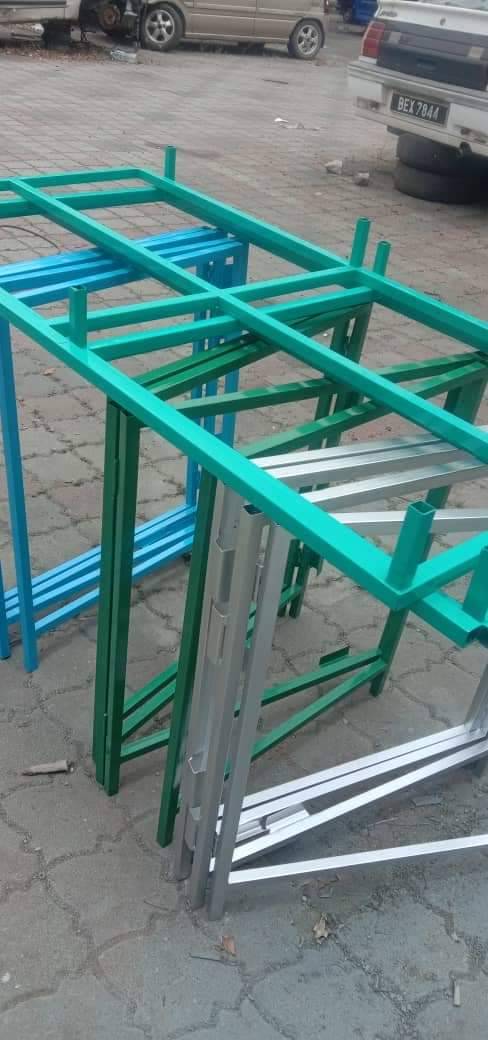
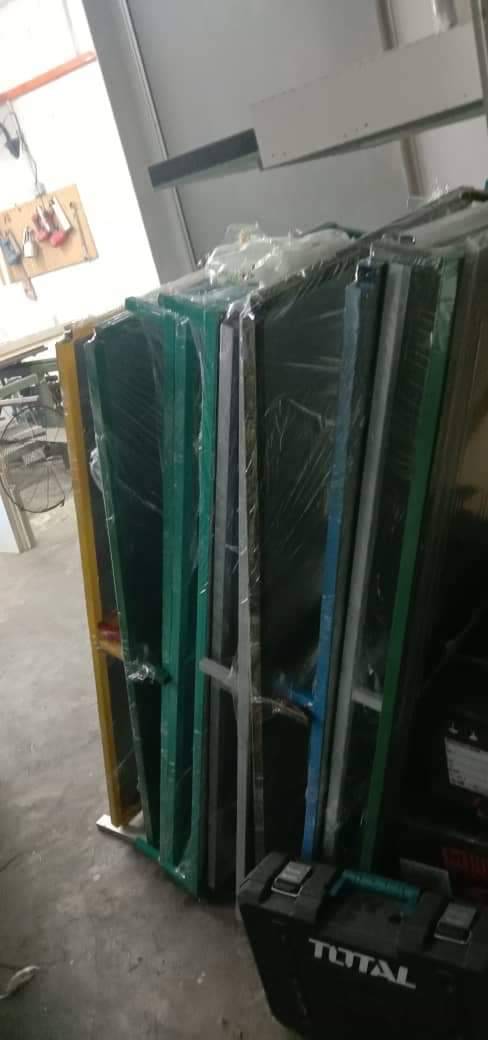
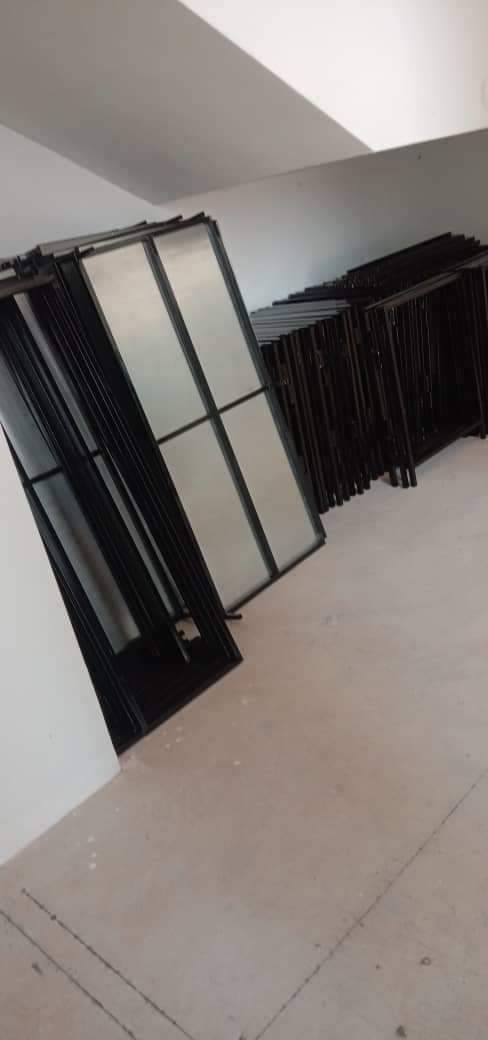
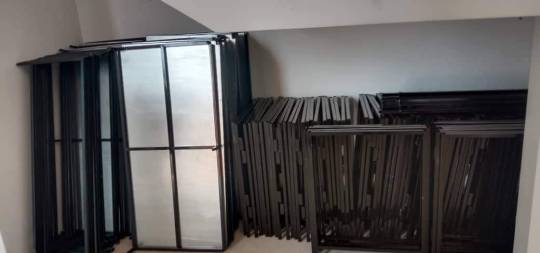
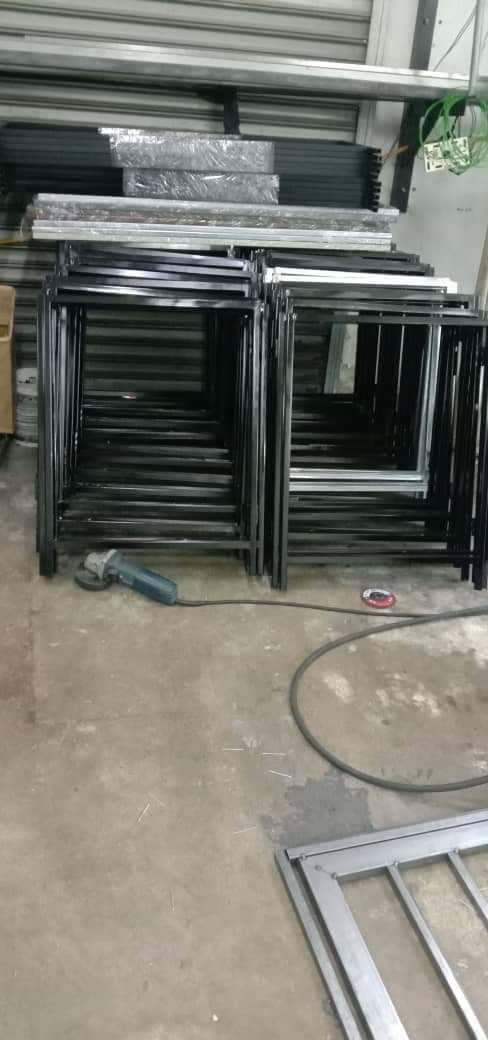
0 notes